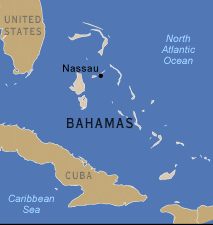According to the terms of the United States Foreign Assistance Act of 1961, no individual Eastern Caribbean country traffics enough cocaine to the U.S. to be considered a major drug transit country. However, considered as a group, the seven Eastern Caribbean countries: Antigua and Barbuda, Barbados, Dominica, Grenada, St. Kitts and Nevis, St. Lucia, and St. Vincent and the Grenadines are a major transit zone for drugs, mostly cocaine and marijuana, traveling from South America to the U.S. and other global markets.
Annually, an estimated 30 to 35 metric tons of cocaine pass through the Eastern Caribbean to the United States, with an additional eight to nine times that amount heading to Europe.
The secluded beaches and unmonitored marinas of Antigua and Barbuda provide excellent locations for conducting drug transfer operations. U.S. Law enforcement officials report that there are Colombian nationals participating in trafficking operations in Antigua and believe that an increase in airport arrests in Antigua indicates that improved airport enforcement in Jamaica has prompted traffickers to transport drugs through Antigua. The U.S. and Antigua and Barbuda collaborate on maritime and aviation law enforcement.
Antigua and Barbuda is susceptible to money laundering because of its loosely regulated offshore financial sectors and its Internet gaming industry. Antigua and Barbuda does not have a unified regulatory structure for its domestic and offshore banking sectors; currently the Eastern Caribbean Central Bank supervises Antigua and Barbuda’s domestic banking sector. The Central Bank is currently not able to share examination information directly with foreign regulators or law enforcement personnel, which limits enforcement possibilities.
From 1999 through 2003, the government of Antigua and Barbuda conducted an extensive review of the offshore banking sector, and in 2002 comprehensive anti-money laundering guidelines, requiring banks to establish the true identities of account holders and to verify the nature of an account holder’s business, were issued. More than 30 offshore banks had their licenses revoked, were dissolved, were placed in receivership, or were otherwise put out of business. In addition, more than $90 million in assets potentially connected to money laundering cases in the U.S. and elsewhere were frozen.
As of 2004, Antigua and Barbuda had 15 licensed offshore banks in operation. Of these, however, several did not meet international physical presence standards. Despite the comprehensive nature of the law, Antigua and Barbuda has yet to prosecute a money laundering case on its own.
The Bahamas is a major transit country for cocaine and marijuana bound for the United States from South America and the Caribbean. It is estimated that some 12 percent of cocaine trafficked to the U.S. passes through a Jamaica-Cuba-Bahamas trade route.
The Bahamas consists of 700 islands and cays distributed over an area similar in size to the state of California. At its closest geographic point, the Bahamas is only 40 miles from South Florida, which makes it an attractive location for drug transshipments of Colombian cocaine and Jamaican marijuana on the maritime and aerial routes.
Brazil
Brazil is South America’s leading economic power, and it is also both a major transshipment point and significant consumer market for Bolivian, Colombian, and Peruvian cocaine headed for Europe and the United States. Traffickers also use Brazil as a way station for narcotics moving between Peru and Colombia.
Brazil’s Amazon region is a primary route of transporting narcotics from Colombia because of its remote location, loosely monitored air space, and extensive river system. The Brazilian Federal Police believe that international narcotics trafficking organizations may be investing in building cocaine processing laboratories in the country.
In September 2000, the Brazilian government started the Colombia Border Security Program (COBRA) to focus on controlling land and air entry into Brazil from Colombia at various border control points. Because of its success in controlling illicit trafficking, COBRA has expanded its program to include its other northern neighbors including Peru, Venezuela, and Bolivia.
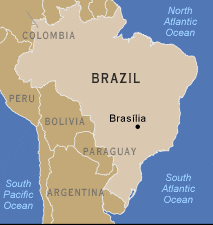 As a regional financial center, illicit narcotics proceeds are often laundered through Brazil’s financial system. In 2002, a financial intelligence unit, the Council for the Control of Financial Activities (COAF) began investigating instances of money laundering linked to the sale and purchase of luxury automobiles, an unregulated sector in Brazil. Other money laundering schemes involve the purchase of winning lottery tickets to justify the increase of funds. Under Brazil’s anti-money laundering law, the lottery sector must notify COAF of any winners of three or more prizes equal to or higher than 10,000 reals within a 12-month period.
As a regional financial center, illicit narcotics proceeds are often laundered through Brazil’s financial system. In 2002, a financial intelligence unit, the Council for the Control of Financial Activities (COAF) began investigating instances of money laundering linked to the sale and purchase of luxury automobiles, an unregulated sector in Brazil. Other money laundering schemes involve the purchase of winning lottery tickets to justify the increase of funds. Under Brazil’s anti-money laundering law, the lottery sector must notify COAF of any winners of three or more prizes equal to or higher than 10,000 reals within a 12-month period.
According to Brazilian law, money laundering related to drug trafficking, terrorism, arms trafficking, extortion, and organized crime is considered a crime, and offenders can be sentenced to a maximum of 16 years in prison. In 2003, Brazilian courts handed down their first criminal conviction for money laundering.
The tri-border area of Argentina, Brazil, and Paraguay is known for significant drug-related financial activity. The tri-border area lacks currency controls and cross-border reporting requirements. One of the most well known money laundering scandals involved Banestado, the bank of Brazil’s Parana state. In 1995, five banks in the tri-border region, including Banestado, were authorized to open currency exchange accounts, known as CC-5 accounts. CC-5 accounts quickly became popular in money laundering, and brokers opened hundreds of fake CC-5 accounts, into which criminals deposited millions of reals. The money was then wired in dollars to the Banestado branch in New York City and from there to other banks, usually in countries considered to be tax havens. Money changers and complicit Banestado officials took cuts from each transaction. More than 250 phony CC-5 accounts have since been identified, and it is suspected that as much as $30 billion passed through Banestado accounts in the U.S. between 1996 and 1999, a portion of which was likely laundered. The case is still being investigated.
Canada
Canada is a major transit point for cocaine entering the American market. According to the Royal Canadian Mounted Police, approximately 15 to 24 metric tons of South American cocaine enters Canada each year, often through Jamaica. Some is destined for the Canadian domestic market, but much of it is meant for transshipment to the United States. Asian, Colombian, and Italian-based criminal organizations cooperate with one another in the trafficking and distribution of both heroin and cocaine.
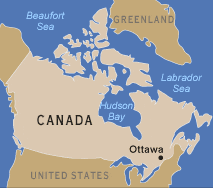 Canada is vulnerable to money laundering because of its advanced financial services sector and heavy cross-border flow of currency. With more than one billion U.S. dollars in trade a day, both the U.S. and Canadian governments are concerned about the criminal abuse of cross-border movements of currency including currency transactions involving international drug trafficking and currency derived from illegal drug sales in the United States.
Canada is vulnerable to money laundering because of its advanced financial services sector and heavy cross-border flow of currency. With more than one billion U.S. dollars in trade a day, both the U.S. and Canadian governments are concerned about the criminal abuse of cross-border movements of currency including currency transactions involving international drug trafficking and currency derived from illegal drug sales in the United States.
The Canadian government passed the Proceeds of Crime (Money Laundering) and Terrorist Financing Act (PCMLTFA) in December 2001 in order to assist in the detection and deterrence of money laundering, facilitate the investigation and prosecution of money laundering, and establish a financial intelligence unit dedicated to these tasks. The act created a mandatory reporting system for suspicious financial transactions, large cash transactions, large international electronic funds transfers, and cross-border movements of currency and monetary instruments totaling Canadian 10,000 dollars or greater. In addition, businesses handling third-party transactions are required to report suspicious financial transactions. Failure to file a suspicious transaction report could lead to up to five years imprisonment, a fine of two million dollars, or both.
The Financial Transactions and Reports Analysis Center of Canada, created by the PCMLTFA, receives and analyzes reports from financial institutions and other financial intermediaries and makes disclosures to law enforcement and intelligence agencies about possible irregularities. During 2002-2003, the center received more than two million reports of suspicious transactions totaling 350 million dollars.
Cayman Islands
While the Cayman Islands are used occasionally as a transshipment point for cocaine from South America and marijuana from Jamaica intended for the United States, the Caymans are known primarily as a haven for investing drug profits and money laundering.
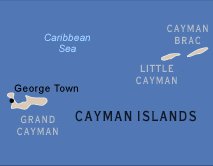 With no direct taxation, the islands are a major offshore financial center, providing a wide range of services such as private banking, brokerage services, mutual funds, trusts, as well as company formation and company management. More than 40,000 companies are registered in the Cayman Islands, including almost 600 banks and trust companies with banking assets exceeding 500 billion dollars.
With no direct taxation, the islands are a major offshore financial center, providing a wide range of services such as private banking, brokerage services, mutual funds, trusts, as well as company formation and company management. More than 40,000 companies are registered in the Cayman Islands, including almost 600 banks and trust companies with banking assets exceeding 500 billion dollars.
The Cayman Islands are popular with traffickers and launderers because of strong bank secrecy laws, and the U.S. Drug Enforcement Administration Financial Action Task Force has listed the Caymans as one of 15 countries having failed to cooperate fully in the international fight against money laundering. The U.S. Department of the Treasury has issued an advisory, warning U.S. financial institutions about the Caymans’ weak anti-money laundering laws.
In response, the country is developing anti-money laundering legislation. In September 2000, money laundering regulations were put into effect that specify record keeping and customer identification requirements for individuals who establish a new business relationship, or engage in a one-time transaction of approximately 18,000 dollars. The Proceeds of Criminal Conduct Law made failure to report a suspicious transaction a criminal offense that could result in fines or imprisonment.
Costa Rica
With access to both the Caribbean and the Pacific oceans, Costa Rica is a major transshipment point for U.S.-bound narcotics, and for the refueling of fishing vessels and speedboats used in drug trafficking. Northbound maritime routes through Costa Rica’s Pacific Exclusive Economic Zone in the Eastern Pacific are a favorite with traffickers. Costa Rica is known for a sizable amount of drug shipments in truck compartments, dump truck loads, and hidden car compartments as well.
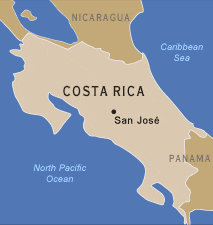 Counter-narcotics agencies in Costa Rica — the Judicial Investigative Police and the Ministry of Public Security’s Drug Control Police investigate both domestic and international drug smuggling and distribution, working closely with the U.S. As of fall 2004, they have been far more successful at airport interdiction than they have at addressing smuggling by sea and land routes.
Counter-narcotics agencies in Costa Rica — the Judicial Investigative Police and the Ministry of Public Security’s Drug Control Police investigate both domestic and international drug smuggling and distribution, working closely with the U.S. As of fall 2004, they have been far more successful at airport interdiction than they have at addressing smuggling by sea and land routes.
Low taxes and strong secrecy laws have created an offshore banking sector that is attractive to traffickers for money laundering and other financial crimes. Under a service contract with a local Costa Rican bank, foreign offshore banks can conduct transactions as long as they do not engage directly in financial operations in Costa Rica. By using correspondent accounts in other countries, they receive or transfer funds in foreign currency to avoid the financial rules and laws of Costa Rica. The banks are required only to provide monthly balance statements and year-end audits.
The Colombian Black Market Peso Exchange is active in Costa Rica. Authorities believe that $225 million was transferred through the exchange between April 2002 and December 2002. Colombian international credit card holders and currency exchange houses continued to bring amounts as large as $300,000 into Costa Rica; those funds were then transferred into U.S. banks, continuing on to Colombian banks.
In January 2002, Costa Rica criminalized the laundering of proceeds from all serious crimes. Costa Rica’s financial intelligence unit is small and ill-equipped to provide the information needed by investigators to prosecute offenders. Because of this, Costa Rica has yet to prosecute anyone successfully under its anti-money laundering law.
The Dominican Republic
Like its neighbor Haiti, the Dominican Republic is a major transit country for South American cocaine and heroin headed for the United States and Europe. Eight percent of cocaine reaching the United States flows through the island of Hispaniola, which includes both the Dominican Republic and Haiti. While some cocaine is transshipped from Haiti, reports indicate that nearly half this amount reached the Dominican Republic directly from South America, generally via maritime routes. From there, cocaine is shipped either directly to the U.S. mainland or by way of Puerto Rico.
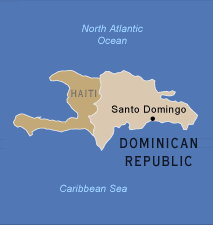 Dominican criminal organizations are beginning to play a larger role in command and control of international drug trafficking operations. In particular, Dominican crews staff many of the speedboats and fishing craft used by smugglers throughout the Caribbean. Corruption and weak government institutions in the Dominican Republic pose a major problem in controlling the drug trade, while unrest and corruption in Haiti have made it nearly impossible for Dominican law enforcement to control smuggling across the country’s land and sea borders.
Dominican criminal organizations are beginning to play a larger role in command and control of international drug trafficking operations. In particular, Dominican crews staff many of the speedboats and fishing craft used by smugglers throughout the Caribbean. Corruption and weak government institutions in the Dominican Republic pose a major problem in controlling the drug trade, while unrest and corruption in Haiti have made it nearly impossible for Dominican law enforcement to control smuggling across the country’s land and sea borders.
The U.S. provides training and equipment to the Dominican military to disrupt narcotics smuggling at Dominican land and sea borders as well as at airports. In 2003, the U.S. provided three harbor patrol craft, equipment, training to expand counter-narcotics canine units, as well as radio equipment to address communications difficulties along the Haitian border.
The Dominican Republic is still developing a financial regulatory system; thus Colombian narcotics traffickers still favor the country for illicit financial transactions. Dollar proceeds from the cocaine trade are smuggled from the United States into the Dominican Republic either by couriers who carry bulk cash or by wire transfer. Once in the Dominican Republic, the money never enters the banking system; currency exchange houses and money remittance companies facilitate the laundering of these funds.
Since June 2002, Law No. 72-02 has required the reporting of cash transactions greater than approximately 10,000 dollars to the Dominican government in order to combat money laundering, drug trafficking, and related activities. Although narcotics-related money laundering has been a criminal offense since 1995, as of summer 2004 only three successful money-laundering prosecutions had been conducted.
Haiti
Approximately 8 percent of cocaine destined for the U.S. comes through Hispaniola, the island that is home to Haiti and the Dominican Republic. Haiti’s ongoing political and economic crises, pervasive government corruption, powerless law enforcement capabilities, and weak legal system have made Haiti a major Caribbean transshipment point for South American cocaine en route to the U.S. and Europe.
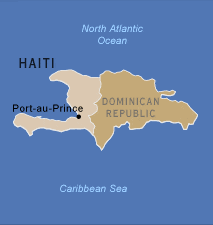 Given the general weakness of the state, Haitian drug trafficking organizations operate with relative freedom. Large areas of the country, its borders, and its territorial waters are basically un-policed: the 225-mile border with the Dominican Republic is largely uncontrolled, the Haitian Coast Guard has no presence on the south coast, and the National Police has no aircraft. Cocaine arrives in the country on maritime vessels or by air. Traffickers forward these shipments onward by sea directly to the U.S. or over land to the Dominican Republic for transshipment.
Given the general weakness of the state, Haitian drug trafficking organizations operate with relative freedom. Large areas of the country, its borders, and its territorial waters are basically un-policed: the 225-mile border with the Dominican Republic is largely uncontrolled, the Haitian Coast Guard has no presence on the south coast, and the National Police has no aircraft. Cocaine arrives in the country on maritime vessels or by air. Traffickers forward these shipments onward by sea directly to the U.S. or over land to the Dominican Republic for transshipment.
U.S. law enforcement officials believe that both corrupt Haitian government officials and members of the Haitian National Police are involved in drug trafficking and as well as leaking information on planned narcotics operations. This coupled by a weak and understaffed Haitian National Police makes cooperation between the U.S. and Haiti very difficult.
Two thirds of Haiti’s economy is informal, meaning most of the money in the Haitian economy does not flow through the legitimate financial system. This makes the country highly susceptible to money laundering and a favorite location for Colombian drug traffickers to conduct illicit financial transactions.
Even so, Haiti does have anti-money laundering legislation on the books. The Law on Money Laundering from Illicit Drug Trafficking and other Crimes and Punishable Offenses adopted in 2001 makes all financial institutions and natural persons subject to money laundering controls. Failure to meet these directives can result in long prison sentences and large fines.
Rampant corruption and the large informal economy limit the full implementation and enforcement of Haiti’s 2001 anti-money laundering law.
Mexico
With an estimated 70 percent of U.S.-bound cocaine shipments passing through its borders, Mexico is the principal transit country for South American cocaine entering the United States. In addition, Mexico is the largest foreign supplier of marijuana and methamphetamine to the U.S.
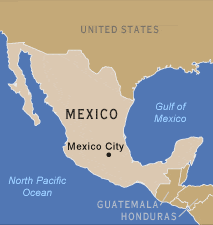 Mexican-based trafficking groups located in the United States have taken a controlling interest in the distribution of cocaine across the country. In response, U.S. and Mexican authorities have been collaborating on operations, intelligence gathering, and investigations in an attempt to dismantle these drug organizations. A culture of corruption at many levels of government and society in Mexico is a major hindrance in Mexican and U.S. law enforcement efforts against drug trafficking, though the government under Vicente Fox has pursued anticorruption efforts in law enforcement and the military.
Mexican-based trafficking groups located in the United States have taken a controlling interest in the distribution of cocaine across the country. In response, U.S. and Mexican authorities have been collaborating on operations, intelligence gathering, and investigations in an attempt to dismantle these drug organizations. A culture of corruption at many levels of government and society in Mexico is a major hindrance in Mexican and U.S. law enforcement efforts against drug trafficking, though the government under Vicente Fox has pursued anticorruption efforts in law enforcement and the military.
Mexico is a major money-laundering center. In the simplest schemes, drug proceeds are smuggled as cash into Mexico and back into the United States via couriers and armored vehicles, as well as through wire transfers. Trafficking groups also make use of Mexican banking regulations; money can still be transferred to Mexico through banks or casas de cambio, without a record of the true owner of the funds. Traffickers also take advantage of a loophole created originally to ease money transfers for Mexican workers living in the U.S.: A Mexican consular identification card allows the holder to transfer money from the U.S. into Mexico without opening a bank account in either country.
Strong regulatory laws, including requirements for identifying customers, maintaining records of transactions, reporting suspicious transactions, and reporting transactions of more than 10,000 dollars governs Mexican banks and other financial institutions, though current regulations don’t fully address the money-laundering possibilities posed by offshore banks, casinos, or real estate brokerages.
Panama
Panama serves as a major transshipment point for narcotics headed from South America to the United States. Cocaine traffickers use Panama because of its close proximity to Colombia, immense coastline, and uncontrolled borders. Traffickers use fishing vessels, cargo ships, small aircraft, and speedboats to transit Panamanian waters and airspace and continue on to other Central American countries and the United States. Shipments that arrive in Panama are moved northward on the Pan-American Highway or on containerized cargo ships.
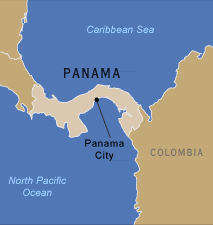 The U.S. and Panama cooperate extensively in counter-narcotics missions, with the U.S. providing equipment, training, and information. In 2003, 103 people seized at sea were transferred for prosecution to the U.S.
The U.S. and Panama cooperate extensively in counter-narcotics missions, with the U.S. providing equipment, training, and information. In 2003, 103 people seized at sea were transferred for prosecution to the U.S.
Government corruption is a concern in Panama. Since January 2002, two major corruption scandals broke within the legislature: one over ratification of two Supreme Court justices and the other over bribes involving a concession law for the Colon Free Zone multimodal center.
Panama is a primary money-laundering center for drug proceeds. The Colon Free Zone is used as an originating and transshipment point for goods purchased with narcotics dollars through the Colombian Black Market Peso Exchange. Panama’s large offshore financial sector includes 370,000 registered international business companies, along with 34 offshore banks, captive insurance companies, and trusts. These institutions engage in currency transactions involving drug proceeds that include significant amounts of U.S. dollars.
Panama’s Law No. 42 requires financial institutions to report currency transactions in excess of 10,000 U.S. dollars and any suspicious financial transactions to the Financial Analysis Unit (UAF), which is Panama’s financial intelligence unit. The Financial Crimes Bill has established criminal penalties of up to ten years in prison and fines of up to one million dollars for financial crimes, including illicit transfers of monies. Panama is also active in the multilateral Black Market Peso Exchange Group Directive, which is the regional effort against the black market system.
Paraguay
Paraguay serves as a transit point for between 40 and 60 metric tons per year of Colombian, Bolivian, and Peruvian cocaine. Its central location and three borders make it an attractive smuggling point for cocaine en route to Argentina, Brazil, Europe, and Africa. Cocaine enters Paraguay with relative ease by land, river, and air over its undeveloped land border, extensive river networks, and numerous unregistered airstrips.
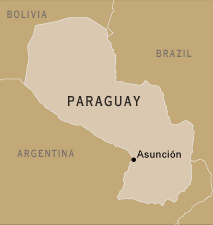 Paraguay has law enforcement agreements with Brazil, Argentina, Chile, Venezuela, and Colombia and the U.S. provides counter-narcotics training, technical assistance, and equipment to the country. However, corrupt police officials compromise enforcement actions against drug traffickers.
Paraguay has law enforcement agreements with Brazil, Argentina, Chile, Venezuela, and Colombia and the U.S. provides counter-narcotics training, technical assistance, and equipment to the country. However, corrupt police officials compromise enforcement actions against drug traffickers.
Because of its relaxed banking regulations, Paraguay has become a principal money-laundering center. Little personal background information is required to open a bank account or to make financial transactions, nonresidents are allowed to hold bank accounts, and foreign banks are permitted to register in Paraguay. There are no controls on the amount of currency that can be brought into or out of the country, and there are no cross-border reporting requirements. In addition, Paraguay has two statutes that make money laundering a criminal offense, which has led to substantial confusion in enforcement due to overlapping provisions.
Drug traffickers have taken notice, and Paraguay’s National Anti-Drug Secretariat (SENAD) estimates that drug trafficking accounts for about 40 percent of laundered funds circulating in Paraguay. The government of Paraguay drafted a new money laundering law, which was introduced to Congress in May 2004. The legislation should come up for consideration sometime this year, and if passed, would result in serious reform of Paraguay’s anti-money laundering policies.
Ciudad del Este, in the tri-border area with the Brazil and Argentina, is the center of Paraguay’s informal economy. The area is a tax-free zone popular with bargain hunters, is also well-known for arms and drug trafficking and is host to a multi-billion dollar contraband re-export trade.
United States
American consumers account for one third of the world’s overall cocaine consumption, making the United States the largest market for the drug in the world. About 350 tons of cocaine are smuggled into the U.S. each year, supplying an estimated 2.7 million chronic cocaine users.
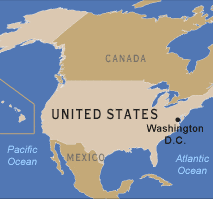 Colombia supplies about 80 percent of the cocaine destined for the U.S., 72 percent passes through the Mexico/Central America corridor including land routes and maritime routes along Mexico’s east and west coasts. Another 27 percent is moved over sea routes in the Caribbean and 1 percent is smuggled in by air directly from South America.
Colombia supplies about 80 percent of the cocaine destined for the U.S., 72 percent passes through the Mexico/Central America corridor including land routes and maritime routes along Mexico’s east and west coasts. Another 27 percent is moved over sea routes in the Caribbean and 1 percent is smuggled in by air directly from South America.
While Colombian drug trafficking organizations control the worldwide supply of cocaine, Mexican drug trafficking organizations are increasingly becoming the leading distributors of wholesale cocaine in the United States, particularly in the western and southern U.S. Colombian gangs still control wholesale level cocaine distribution in large cities such as Boston, Miami, Newark, New York, and Philadelphia, while Dominican drug trafficking organizations are responsible for the street-level distribution in cities across the U.S.
In 2003, the Drug Enforcement Administration (DEA), the agency responsible for interdicting illicit drug traffic, made 10,518 cocaine-related arrests, representing 38.7 percent of the total Federal drug arrests made during that year.
The United States is a major center for money laundering. Law enforcement agencies estimate that between 100 billion and 300 billion dollars in drug trade proceeds is laundered annually in the U.S., with Colombian and Mexican drug trafficking organizations the primary beneficiaries. Traffickers smuggle bulk cash out of the U.S. via cars, aircraft, commercial trucks, buses, trains, boats, couriers on foot, and using the mail system. Drug proceeds are laundered through money service businesses such as money remittance, money exchange, and check cashing firms or are integrated into the legitimate financial system by the depositing of currency under threshold reporting requirements. Drug smugglers use trade-based money laundering to conceal and transfer large quantities of currency into less conspicuous assets or commodities.
In addition, drug traffickers use unique schemes including the Colombian Black Market Peso Exchange (BMPE) and the Asia-based hawala system to launder their drug proceeds. The BMPE in particular has come under scrutiny in that it has, apparently unwittingly, involved a number of major U.S. corporations in the money laundering process.
In 1986, the United States became the first country to make money laundering a crime. The Money Laundering Act provides for up to 20 years imprisonment and a fine of $500,000 or twice the amount laundered if convicted. The Bank Secrecy Act of 1970 established regulatory reporting standards and requirements for large bank transactions, while all U.S. financial institutions are required to file a Currency Transaction Report for cash transactions of more than $10,000, and a Suspicious Activity Report for various suspicious transactions in amounts totaling as little as $5,000. The U.S. Department of the Treasury has also enacted the Geographic Targeting Orders, which required money remitters to file weekly reports on all currency transactions over an arbitrary figure in specific countries.
Venezuela
Venezuela is a major transshipper of cocaine to the United States and Europe. Sharing Colombia’s largest land border, an estimated 100 to 150 metric tons of cocaine travels through Venezuela each year. Most of this cocaine enters Venezuela from Colombia over the Pan-American Highway and exits Venezuela by sea via the coastal states of Carabobo and Sucre, often using containerized commercial sea freight.
 Political unrest, national strikes, and institutional corruption have interfered with Venezuela’s interdiction efforts, though the government has conducted its own eradication programs and has seized large amounts of cocaine since. Venezuela has collaborated with the U.S. on narcotics control efforts, including a U.S.-funded cargo inspection facility at Venezuela’s largest commercial seaport.
Political unrest, national strikes, and institutional corruption have interfered with Venezuela’s interdiction efforts, though the government has conducted its own eradication programs and has seized large amounts of cocaine since. Venezuela has collaborated with the U.S. on narcotics control efforts, including a U.S.-funded cargo inspection facility at Venezuela’s largest commercial seaport.
Money laundering in Venezuela generally involves proceeds generated by Colombia’s cocaine and heroin trafficking organizations. Reportedly, money circulating in the country’s Margarita Island free-trade zone is laundered through the real estate market. Venezuela may not be a regional financial center, but its proximity to drug producing countries, weaknesses in its anti-money laundering system, and corruption continue to make Venezuela particularly vulnerable to money laundering.
The Superintendence of Banks has implemented controls to prevent and investigate money laundering. However, there is only one legal mechanism for the investigation and prosecution of money laundering crimes. Under the 1993 Organic Drug Law, a direct connection between the illegal drugs and the proceeds must be proven to establish a money laundering offense.
Lacking the legal basis to employ modern investigative techniques with appropriate legal safeguards, Venezuelan law enforcement authorities find it very difficult to investigate and prosecute sophisticated criminal organizations and complex crimes such as money laundering. Even so, Venezuela and the U.S. share money-laundering information under a 1990 agreement; the information shared has resulted in the seizure of significant amounts of money and several arrests.
- Previous: How Money Gets Home




